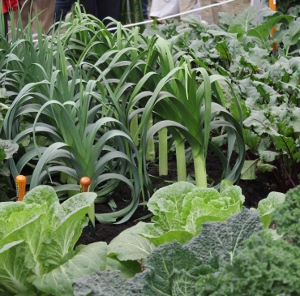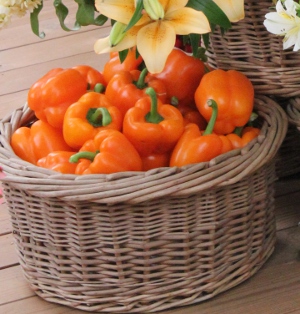|
Getting started
For a bountiful freshl veges whether you have a designated vege patch, or mixed in your flower bed or growing in containers and baskets there are a few vital points for success.
Key Points for Success
- Warm, sunny site
- Free draining soil with compost added.
- Quality seeds or plants
- Water during dry periods
- Planned succession of crops
The plants
Whether you grow your veges from seeds or seedlings ensure you purchase good quality product. We recommend Zelandia seedlings, Yates seeds and for the organic enthusiasts, plant Oakdale organic seedlings.
Where to plant
- Vegetables will grow best in a warm sunny position.
- They will not grow and yield in shade or where they have to compete for light and moisture.
- Shelter from strong winds is also a benefit.
- The size of the vegetable garden depends on the size of your family and the vegetables required.
- Mix compost into vege beds.
What to plant and when
- Cool season veges are best planted from Feb till Sept for harvesting May to Dec.
- This group includes broad beans, broccoli, brussels sprouts, cabbage, cauliflower, onions, peas, spinach and turnips.
- Warm season veges grow best at temperatures above 20°C. They grow poorly in cold weather and are susceptible to frost. Plant from Oct till Feb for harvesting December till May.
- This group includes beans, capsicum, eggplant, potato, sweet corn, kumara, tomato and all the curcubit vine crops.
- There is a third group of vegetables which are intermediate and grow best at temperatures of 15 to 25°C. This group includes beetroot, cabbage, carrot, celery, leek, lettuce, parsnip, radish and silver beet. Many of these can be grown in cool or warm conditions, but the correct variety for the season must be chosen or they may bolt to seed.
Planning a succession
- For a steady continuous supply of vegetables it is best to plan requirements and sow little and often.
- At the same time make use of the season changes and rotate crops.
- A plot system or a narrow garden with short rows often makes this easier to manage.
Tending
- Watering: During dry weather it is important to keep vegetables actively growing by regular watering.
- If they suffer moisture stress they will bolt to seed.
- Feeding At the beginning of spring apply a dressing of lime. Work this into the soil and leave for a week, then add Tui General or Vegetable Food and work this into the soil.
- Regular feeding with Miracle Gro is beneficial for fast growing crops such as lettuces and tomatoes.
Making best use of Space
- Many sections / backyards today are small with limited scope for the vegetable garden. However, with careful planning it is still possible to grow a range of vegetables maturing at different times to provide near continuous supply.
- Large pots offer another alternative for small spaces.
- Another space saving technique is to introduce vegetables into the ornamental garden, potager style.
- Hedges of sweet corn, or climbing beans on a fence, blocks of lettuce, carrots, onions, cabbages, and leeks for contrasting foliage. Try novelty vegetables such as multicoloured silver beet, yellow tomatoes, yellow and red peppers.
Dividing up the space
- Some vegetables such as potatoes, courgettes, buttercup / pumpkins, sweet corn, and broad beans take a lot of space and are best grown in a separate area where they are allowed space to spread without shading or smothering smaller plants.
- Growing in plots rather than rows often works best for the smaller plants such as lettuces, carrots, onions, leeks.
|
|
        |








